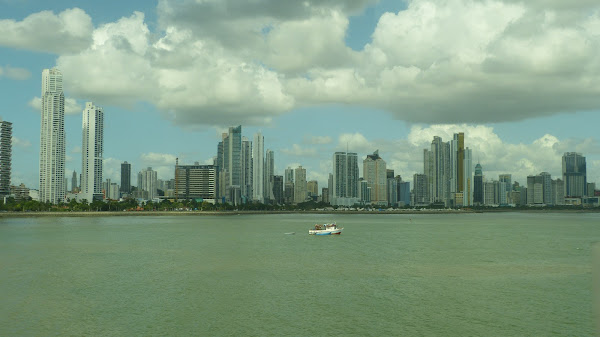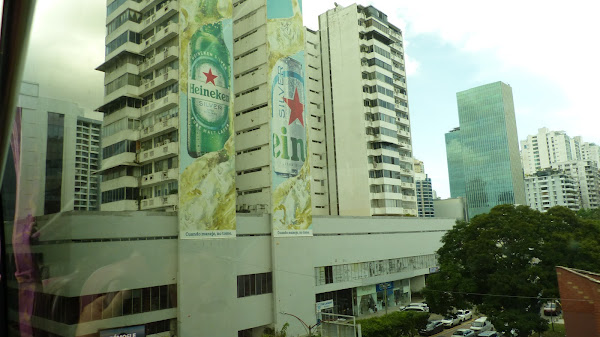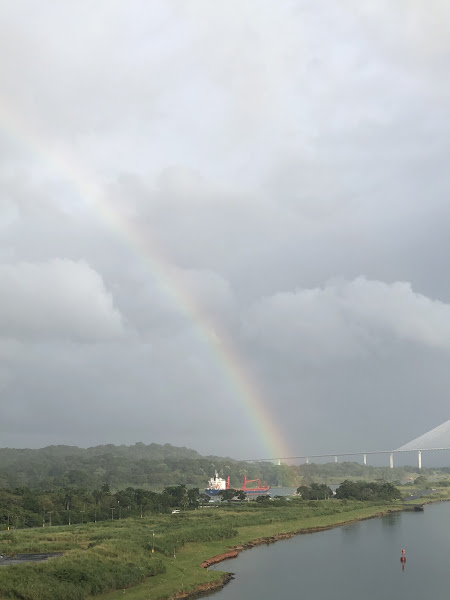The port terminal where our ship docked is impressive. It is a massive structure with striking architectural style. Outside, there is a large parking lot. In the morning, I shared an Uber to the Old Town with two other travelers. We spent about two hours exploring the area on foot before taking another Uber back.
In the afternoon, I joined an excursion that brought us back to the Old Town. Our first stop is at the ruins in Panama City, known as Panamá Viejo (Old Panama). These ruins are the remains of the first Spanish settlement on the Pacific coast of the Americas. This historic site is a UNESCO World Heritage Site and an essential part of Panama’s history. There, I climbed the cathedral tower, walked among the stone walls and streets, and took photos with some gigantic trees.
On the way to the Old Town, we enjoyed views of the modern Panama City skyline while listening to our guide talk about the many millionaires who live there. The wealth in the area is evident, and I wondered if it’s all from the revenue collected from ships passing through the Panama Canal.
Panama Old Town is a small and charming place that doesn’t take much time to explore. Along the way, we visited several notable landmarks, including Plaza Herrera (where we witnessed a service taking place), Iglesia San José, Compañía de Jesús (Society of Jesus), Plaza Mayor o de la Independencia (Main or Independence Plaza), Palacio Municipal (Municipal Palace), Museo del Canal Interoceánico (Interoceanic Canal Museum), Iglesias del Casco Antiguo, Conjunto de San Francisco (Saint Francis Complex), and the Republic of Panama’s Ministry of Foreign Affairs/Bolivar Palace.

























































